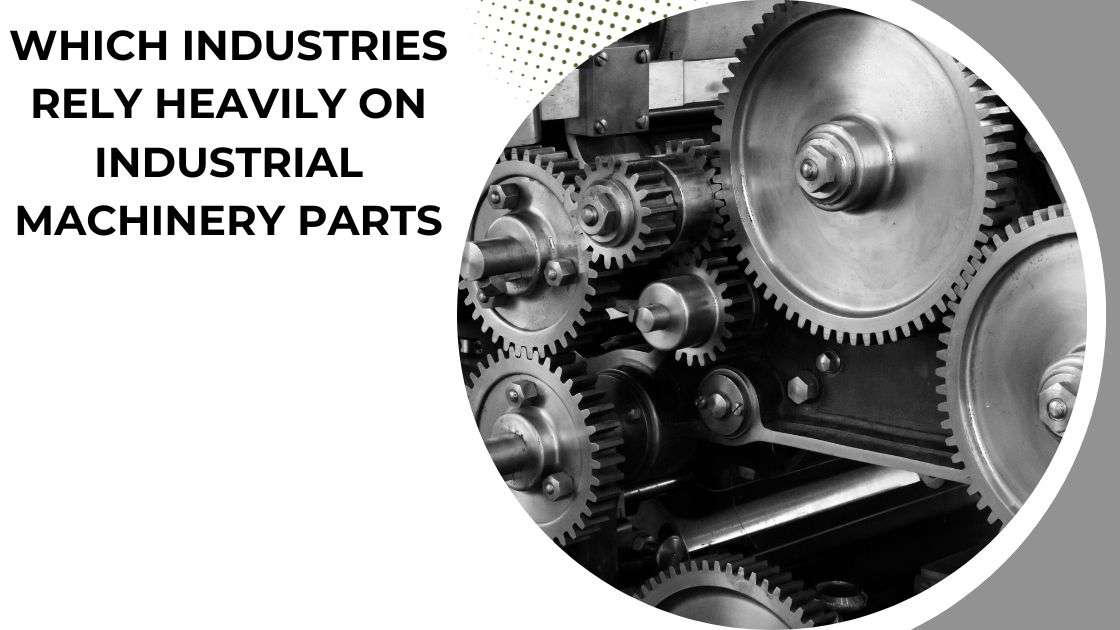
Jan 26,2024
A crucial element often goes unnoticed in the vast landscape of industrial production and infrastructure development but is indispensable for the seamless functioning of various sectors - industrial machinery parts.
These unsung components are significant in keeping industries running smoothly, efficiently, and safely. In this article, we will delve into the industries that heavily rely on industrial machinery parts, shedding light on their importance and impact.
Before we explore these industries, let's first understand the role of industrial machinery parts. Industrial machinery parts encompass components, including gears, bearings, valves, and sensors, that are integrated into machines and equipment. Their primary function is to ensure the optimal performance and longevity of machinery.
These parts are not just passive components; they are active contributors to the efficiency and safety of industrial operations. For instance, bearings reduce friction and wear in moving parts, prolonging the life of machines, while sensors monitor various parameters to prevent malfunctions and accidents. Simply put, industrial machinery parts are the unsung heroes that keep the wheels of industry turning.
The manufacturing industry is the most prominent sector that relies heavily on industrial machinery parts. Precision and efficiency are paramount in this industry. Machinery parts such as CNC (Computer Numerical Control), machine components, molds, and cutting tools are essential for product quality and production speed. A minor malfunction in these parts can lead to costly production delays and defects.
Consider the automotive manufacturing sector, where precision is non-negotiable. Industrial machinery parts like crankshafts, pistons, and transmission components must meet incredibly tight tolerances to ensure the smooth operation of vehicles. Any deviation can result in safety hazards and vehicle recalls, costing manufacturers millions.
Construction sites are usually the center of activities, and heavy machinery is the lifeblood of these projects. Backhoes, bulldozers, cranes, and excavators are just a few examples of the machinery used in construction. These machines rely on many industrial parts to perform their tasks effectively and safely.
Hydraulic systems, for instance, are vital in heavy equipment. Hydraulic cylinders, pumps, and valves control the movement of heavy loads and ensure operation stability. Without reliable industrial machinery parts, construction sites would grind to a halt, causing delays and budget overruns.
Modern agriculture has undergone a significant transformation with the adoption of technology and automation. Agricultural machinery, including tractors, harvesters, and irrigation systems, depend on precision machinery parts to enhance productivity. Sensors and control systems enable farmers to optimize crop yields and reduce resource wastage.
In precision agriculture, where every inch of land and drop of water counts, industrial machinery parts are instrumental in achieving sustainable farming practices. They enable farmers to fine-tune their operations, conserving resources and protecting the environment.
The automotive industry is synonymous with precision engineering, and industrial machinery parts are at the heart of this sector. The assembly of vehicles involves intricate processes, from engine manufacturing to chassis assembly. Each step relies on specialized machinery parts to meet exacting standards.
In the engine assembly line, industrial parts like camshafts, crankshafts, and timing belt pulleys must function flawlessly to ensure the engine's performance and longevity. The failure of any of these parts could lead to engine malfunctions, safety issues, and significant recalls.
The aerospace and defense industries are known for their rigorous quality and safety standards. Aircraft and defense equipment demand the highest precision and reliability, making industrial machinery parts a critical production component.
Aircraft engines, for example, rely on many precision parts, including turbine blades, bearings, and fuel system components. The aerospace sector's stringent quality control and safety regulations require these parts to meet exacting specifications to ensure passenger safety and mission success.
The energy and power generation sector is another domain in which industrial machinery parts are constantly in demand. Whether they produce electricity from fossil fuels, nuclear reactors, or renewable sources, power plants rely on complex machinery to generate energy.
Turbines, generators, and control systems are just a few examples of machinery used in power generation. These systems depend on industrial machinery parts like bearings, seals, and control valves to function reliably and efficiently. Any failure in these critical components can lead to costly downtime and energy shortages.
Mining and extraction operations deal with harsh and challenging environments, making the reliability of machinery even more crucial. Heavy-duty machinery such as excavators, haul trucks, and crushers are essential for extracting valuable minerals and resources.
In mining, machinery parts must withstand extreme conditions, including abrasive materials, dust, and high-impact loads. Components like conveyor belts, hydraulics, and drill bits are constantly subjected to wear and tear, highlighting the need for durable, high-quality industrial machinery parts.
While industrial machinery parts are indispensable, industries face several challenges in sourcing and maintaining these components. Quality assurance, compliance with industry standards, and staying updated with technological advancements are crucial considerations. Suppliers and manufacturers must continually innovate to meet the evolving needs of these industries.
Industrial machinery parts are the unsung heroes of various industries, ensuring that operations run smoothly, efficiently, and safely. Understanding the critical role of these parts is essential for suppliers, manufacturers, and businesses aiming to thrive in these sectors. Quality and innovation in producing and maintaining industrial machinery parts are vital to supporting these industries' continued growth and success.